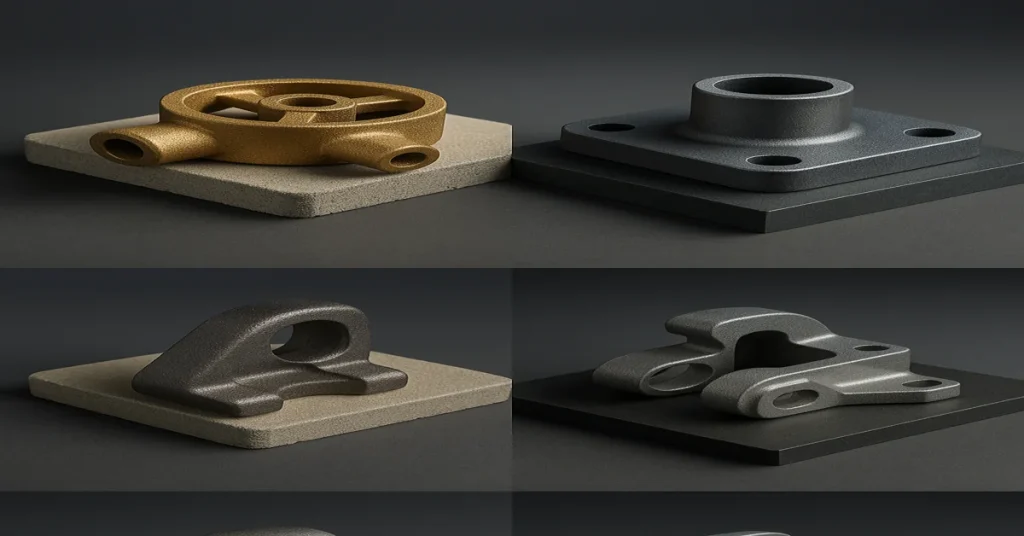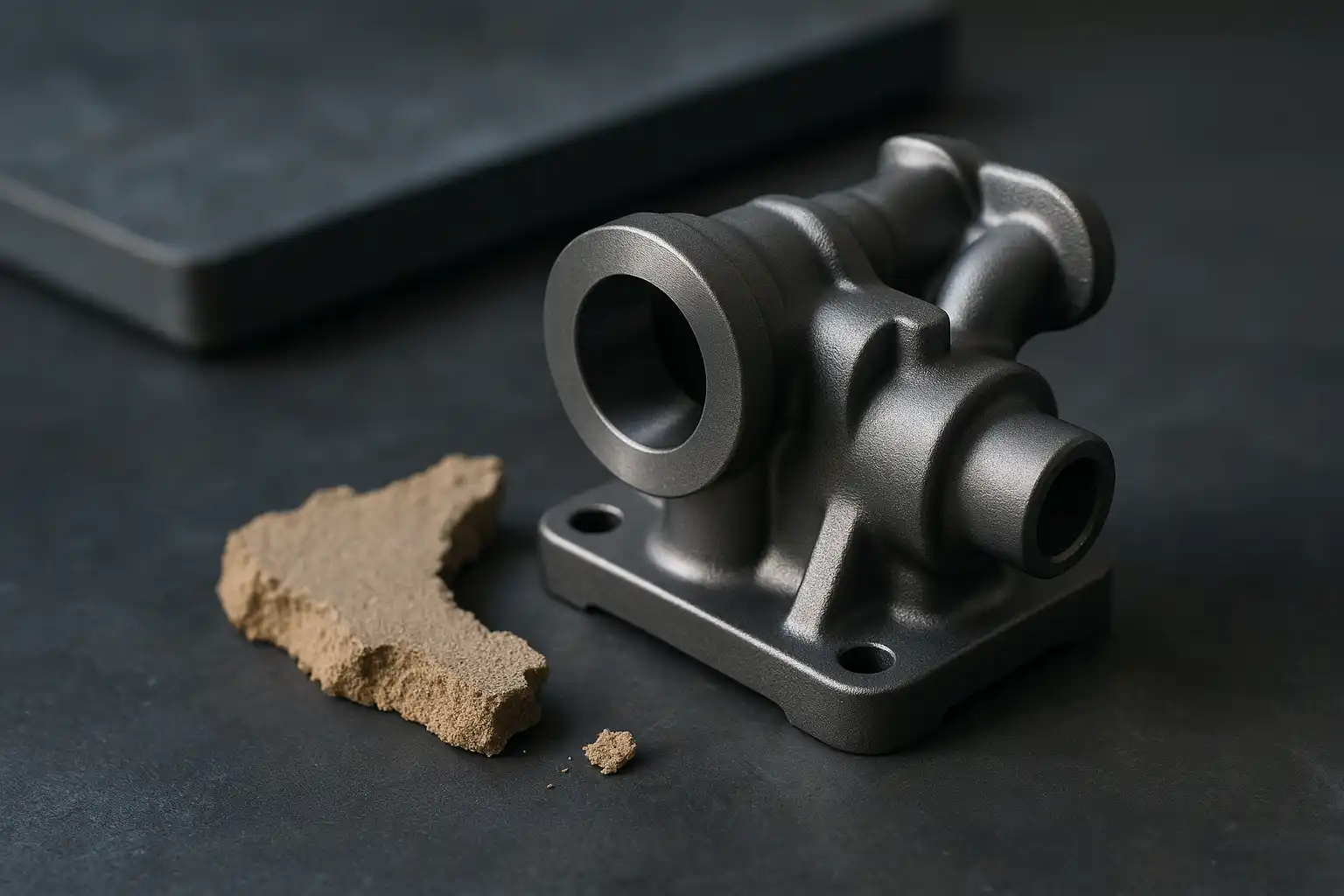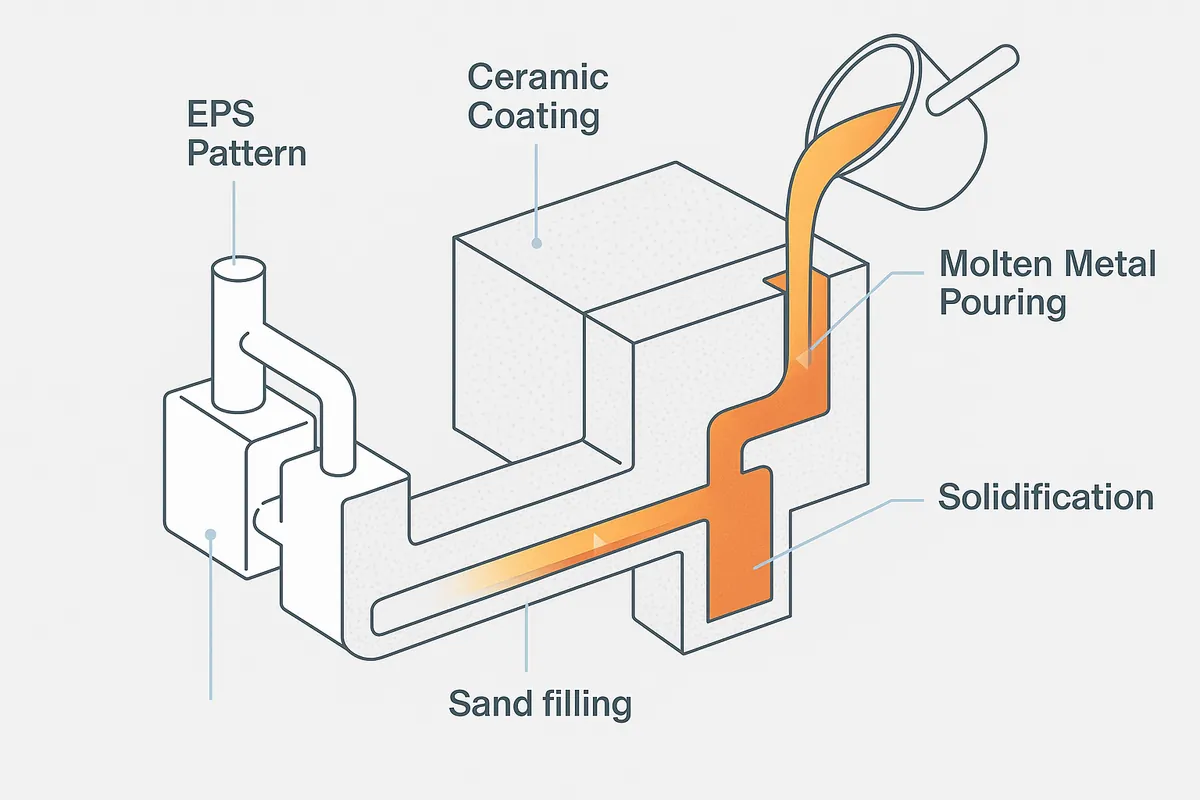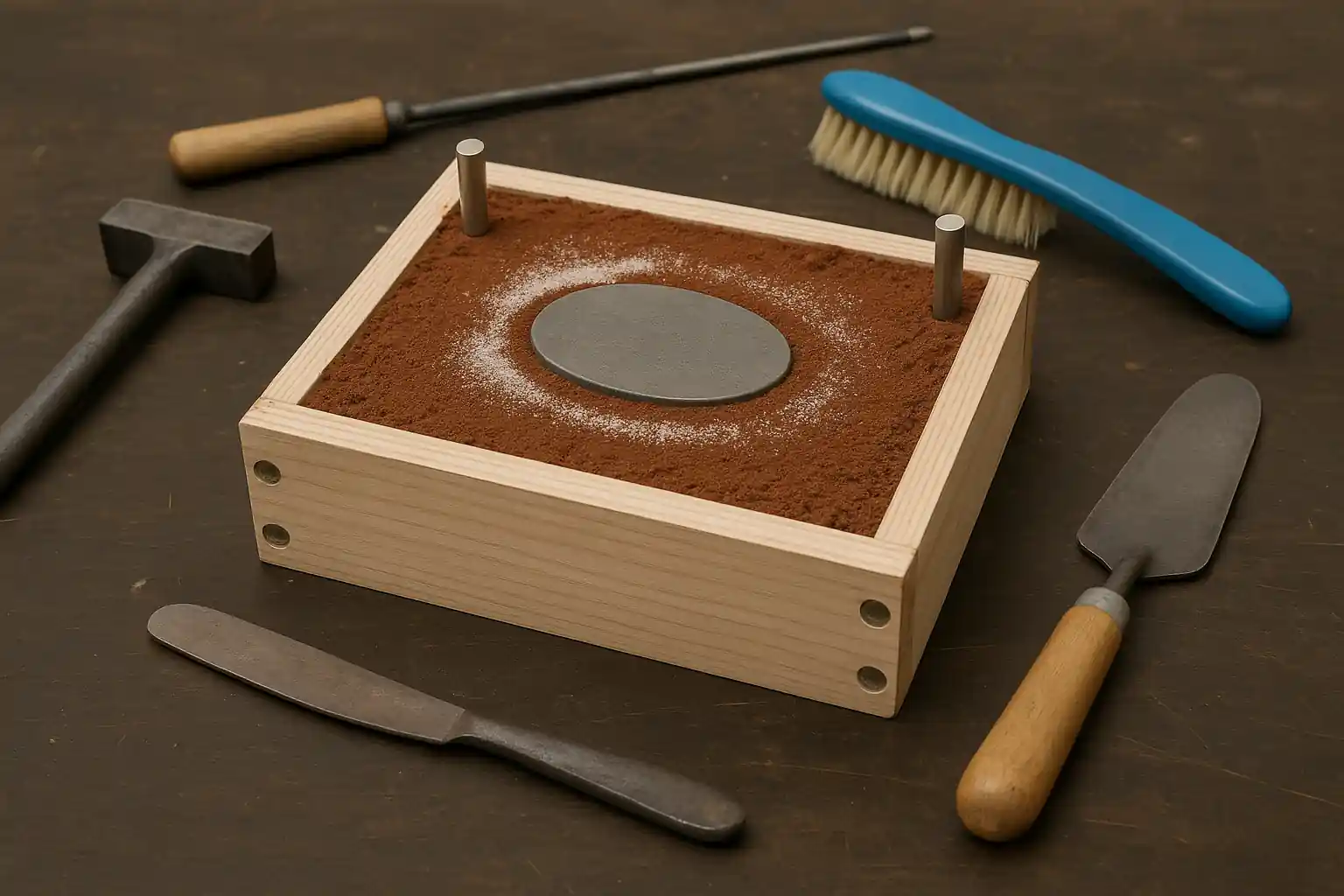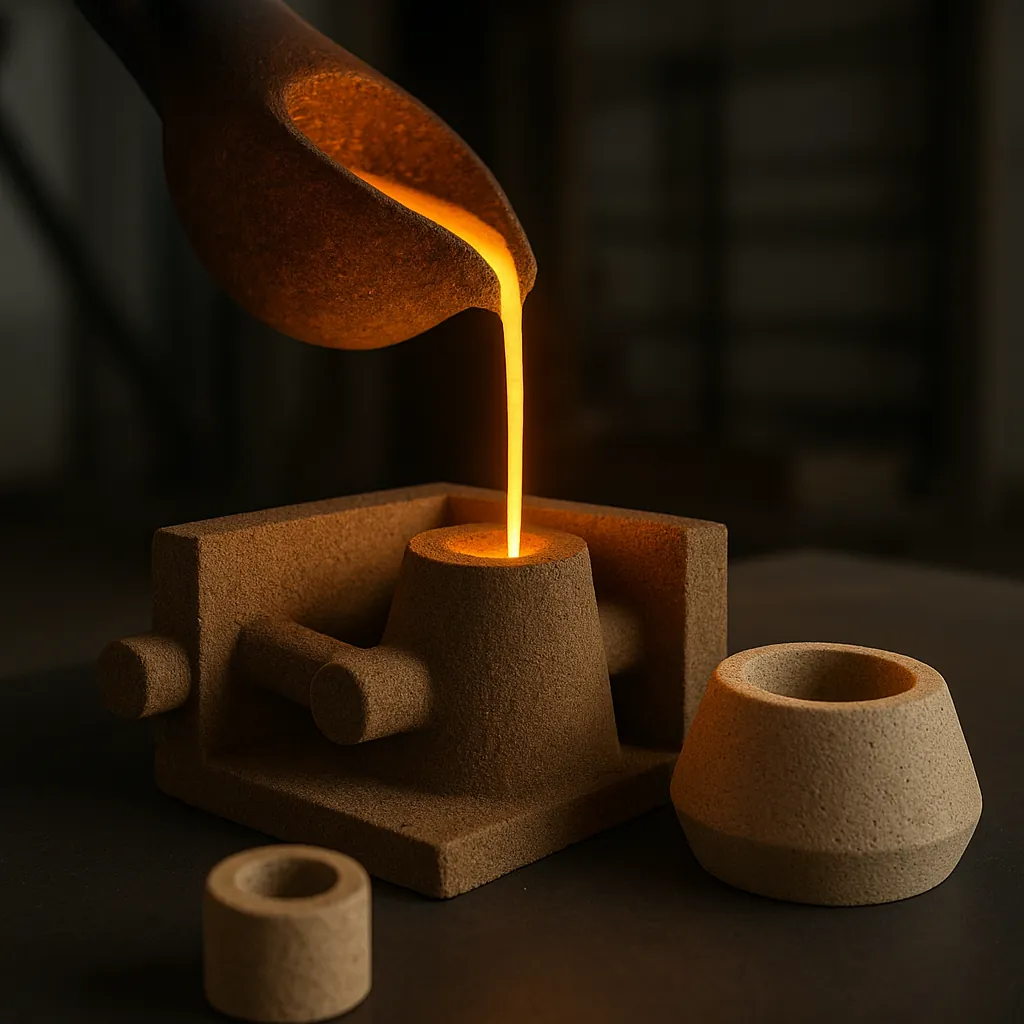I소개
용어에 대한 참고 사항:
이 문서에서 '모래 주조'는 구체적으로 다음과 같은 주조를 의미합니다. 프로세스와 같은 용어는 "강철 주조", "철 주조", "알루미늄 주조"를 모두 지칭하는 경우가 많습니다. 사용된 재료 및 관련 주조 기술에 대해 알아보겠습니다. 단순하고 명확하게 설명하기 위해 일반적인 산업 용도를 기준으로 네 가지 주조 유형을 비교하겠습니다.
올바른 주조 공정을 선택하면 제품 품질, 비용 효율성 및 배송 일정에 큰 영향을 미칠 수 있습니다. 모래 주조, 강철 주조, 철 주조, 알루미늄 주조 등 다양한 기술을 사용할 수 있으므로 프로젝트에 가장 적합한 결정을 내리기 위해서는 각 기술의 차이점을 이해하는 것이 중요합니다.
1. 모래 주조
모래 주조는 가장 오래되고 적응력이 뛰어난 주조 공정 중 하나입니다. 모래 주형을 사용하여 부품을 성형하며 특히 대형 부품이나 소규모 생산에 비용 효율적입니다.
장점
- 프로토타이핑 및 맞춤형 작업에 이상적
- 다양한 금속에 사용 가능
- 낮은 툴링 및 금형 비용
제한 사항
- 낮은 표면 마감 및 치수 정확도
- 정밀도를 위해 2차 가공이 필요함
일반적인 애플리케이션
기계 베이스, 엔진 블록, 펌프 하우징.
2. 강철 주조
강도와 내구성으로 잘 알려진 강철 주조는 광산, 건설, 중장비 제조와 같은 까다로운 환경에서 자주 사용됩니다.
장점
- 뛰어난 기계적 강도
- 뛰어난 내마모성 및 내충격성
제한 사항
- 더 높은 생산 비용
- 엄격한 온도 제어 및 전문가의 취급이 필요합니다.
일반적인 애플리케이션
밸브, 기어, 구조용 공구 및 고강도가 필요한 맞춤형 부품.
3. 철 주조
철 주조, 특히 연성 및 회주철은 뛰어난 내마모성과 진동 감쇠 기능을 제공합니다. 강도와 비용 관리가 중요한 대량 생산에 적합한 옵션입니다.
장점
- 복잡한 모양을 위한 우수한 유동성
- 뛰어난 진동 흡수
- 대량 생산 시 비용 효율적
제한 사항
- 강철에 비해 취약함
- 낮은 인장 강도
일반적인 애플리케이션
자동차 부품, 브레이크 드럼, 맨홀 뚜껑.
4. 알루미늄 주조
알루미늄 주조는 가벼운 무게와 부식에 대한 저항성으로 높이 평가됩니다. 특히 자동차 및 전자 분야에서 많이 사용됩니다.
장점
- 가볍고 무게에 민감한 부품에 탁월함
- 우수한 열 및 전기 전도성
- 특히 다이캐스팅을 통한 빠른 생산 주기
제한 사항
- 강철이나 철보다 낮은 강도
- 부하가 큰 구성 요소에는 적합하지 않음
일반적인 애플리케이션
브래킷, 하우징, 인클로저 및 전자 부품.
🔍 캐스팅 방법 비교표
| 캐스팅 방법 | 비용 | 힘 | 정밀도 | 최고의 애플리케이션 |
|---|---|---|---|---|
| 모래 주조 | ★★ | ★★★ | ★ | 프로토타입, 기계 베이스, 대형 부품 |
| 강철 주조 | ★ | ★★★★★ | ★★★ | 채굴 도구, 밸브, 중장비 부품 |
| 철 주조 | ★★ | ★★★ | ★★ | 자동차 부품, 맨홀 뚜껑, 기계 프레임 |
| 알루미늄 주조 | ★★★★ | ★★ | ★★★★ | 브래킷, 전자 장치, 경량 기계 부품 |
결론
각 주조 방법에는 특정 요구 사항에 따라 고유한 장점이 있습니다. 예를 들어 채굴 장비용 고강도 부품을 생산하는 경우, 강철 주조 를 사용하는 것이 좋습니다. 반면에 무게와 내식성이 가장 중요한 경우, 알루미늄 주조 가 가장 적합할 수 있습니다.
각 공정의 특성과 한계를 이해하면 제품의 기술 요구 사항과 제작 목표에 맞게 주조 선택을 더 잘 맞출 수 있습니다.
